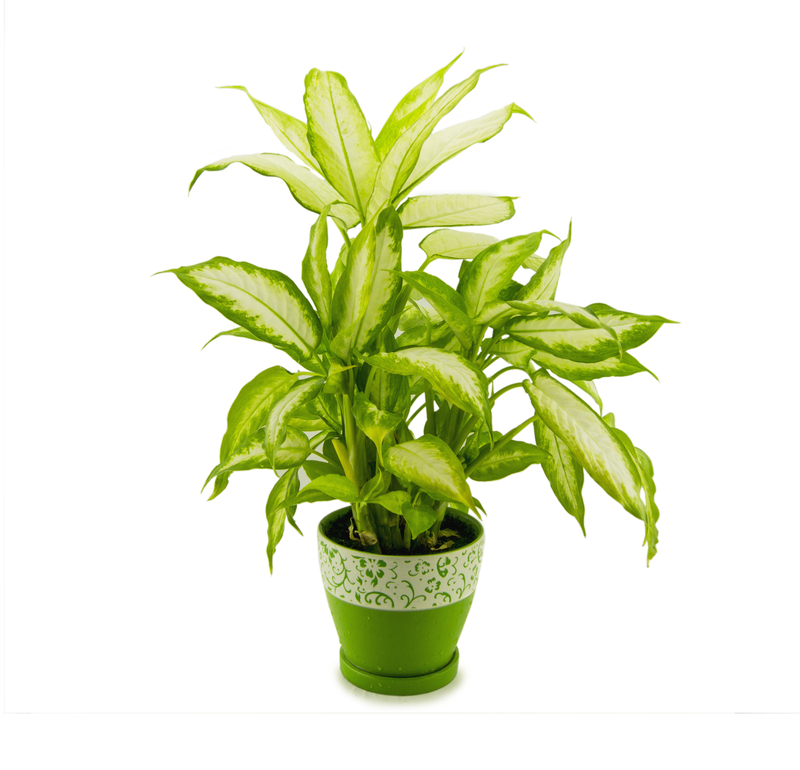Resurrecting Neglected Gardens: Where to Begin the Journey
Posted on 03/09/2025
Resurrecting Neglected Gardens: Where to Begin the Journey
Have you ever gazed at a long-abandoned, overgrown patch of green and wondered if it could become a beautiful retreat once again? Reviving neglected gardens is more than a chore--it's a journey of renewal, creativity, and transformation. Whether you've moved into a new property with a wild backyard or simply let your own garden slip, taking those first steps can be daunting. This comprehensive guide will walk you through where to begin the journey of resurrecting a neglected garden. You'll find practical advice, inspiring ideas, and expert tips to turn even the most forsaken landscape into a flourishing sanctuary.
Why Revitalize an Abandoned Garden?
Bringing a forgotten landscape back to life is immensely rewarding. Not only do you create a beautiful environment for yourself and your family, but you also help support local wildlife and contribute to biodiversity. Resurrecting neglected gardens allows you to:
- Restore aesthetic and financial value to your property.
- Improve mental wellbeing through the therapeutic power of gardening.
- Encourage biodiversity by providing habitats for birds, bees, and other pollinators.
- Connect with nature by cultivating your own outdoor oasis.
But where should you begin the journey when facing dense weeds, tangled shrubs, and the vestiges of old plans? Let's explore the crucial first steps to revive a neglected outdoor space.

Beginnings: Assessing the Forgotten Garden
1. Walk Through and Observe
Begin by simply exploring your forgotten garden. Take notes on what you see and how it makes you feel. Notice the areas that get sunlight, where the shade lies, what plant survivors remain, and which parts seem most overgrown.
- Identify existing features like trees, pathways, fences, or water features.
- Look for hidden treasures such as old perennials or decorative stones that can be revived or reused.
- Check for hazards: Broken glass, unstable structures, and thorny growth should be noted.
_Tip: Take photos before starting. They'll help you chart your progress and plan renovations._
2. Analyze the Soil and Drainage
Soil is the foundation of healthy gardening. Neglected land often has compacted, depleted, or waterlogged soil. To begin the garden restoration journey:
- Test the soil pH and nutrient levels using a home testing kit.
- Check for drainage problems after a rainstorm--look for pooling water or muddy spots.
- Take samples from different locations to assess soil texture and health.
_Amending the soil with compost, organic fertilizers, or gypsum may be necessary for healthy future growth._
3. Identify Invasive Plants and Weeds
Neglected gardens often harbor invasive plants and an army of weeds. The trick is learning how to remove weeds in an abandoned garden without damaging the desirable plants. Common invaders include bindweed, brambles, and couch grass.
- Learn to recognize invasive species vs. native plants.
- Pull or dig up weeds before they go to seed.
- Dispose of invasive plants carefully--don't compost them if they might regrow!
_Tip: Take photos and use plant identification apps or local gardening forums to confirm species._
Planning Your Garden Restoration
1. Visualize Your Ideal Garden
Before you start digging or planting, envision what you want your revived garden to become. Consider these questions:
- Do you want a low-maintenance garden?
- Are you dreaming of abundant flowers, a vegetable patch, or a secluded retreat?
- Would you like to include wildlife-friendly areas or sustainable features?
_Sketch a simple layout or mood board--this helps create a focused plan and keep the project motivating._
2. Set Realistic Goals and Phases
Resurrecting forgotten gardens is rarely done all at once. Break down the process into manageable phases:
- Initial clean-up: Remove rubbish, dead plants, and large debris.
- Structural assessment: Repair paths, beds, and fences as needed.
- Soil improvement: Mulching, composting, and aerating soil.
- Plant selection and planting: Add new plants, shrubs, or lawns when the soil is restored.
_*Don't overcommit! Restoration is a journey--pace yourself for the most rewarding results.*_
3. Equip Yourself for Success
Restore your garden toolkit before heavy work begins. Essential tools for resurrecting neglected gardens include:
- Pruning shears and loppers
- Sturdy gloves and boots
- Shovel, fork, and hoe
- Wheelbarrow
- Compost bin or bags
- Rake and garden waste sacks
_Quality tools make the difference between frustration and satisfaction!_
Step-by-Step: How to Revive an Overgrown Garden
1. Tackle the Clean-Up
Clear away rubbish, old furniture, broken pots, and any hazardous debris. Dispose of waste responsibly--composting what you can and recycling plastics or metals. If there are large, stubborn shrubs, you may need to cut them back to ground level.
2. Begin with the Big Stuff
Start by pruning or removing overgrown trees, woody shrubs, and dense brambles. This opens up light and space, allowing you to see the true structure of the garden.
- Remove dead or diseased wood first.
- Work methodically from one end of the garden to the other.
- If necessary, hire a professional for very large trees or hazardous work.
_This stage can look drastic, but it's the quickest way to uncover the garden's bones._
3. Stripping Weeds and Ground Cover
With space cleared, focus on the ground layer. Use a hoe or fork to uproot persistent weeds. Be persistent and return for several weeks--weed seeds may sprout after your first pass.
- Mulch heavily to suppress new weed growth.
- Solarize weedy areas with clear plastic during warm months to kill roots and seeds.
4. Soil Preparation: The Soul of Restoration
Healthy soil leads to a healthy garden. Spread organic compost, well-rotted manure, or leaf mold over planting beds. Dig or fork it in deeply to improve soil structure and fertility. For large areas, consider green manures or cover crops.
- Check drainage--alter slopes or create raised beds if water is a persistent problem.
- If soil is compacted, consider double digging or aerating with a garden fork.
5. Rejuvenate Existing Plants
Not all survivors are worth keeping, but many can thrive with a little TLC:
- Prune old shrubs and trees to encourage healthy regrowth.
- Divide and replant overcrowded perennials.
- Feed established plants with a balanced fertilizer or seaweed solution.
- Stake or support collapsing plants.
_Tip: Sometimes a neglected plant just needs a haircut and some water to come back to life!_
6. Reimagining and Planting Anew
With hard work done, this is the fun part of resurrecting your neglected garden! Begin adding new plants, shrubs, bulbs, or lawn where bare soil waits.
- Choose resilient, easy-care varieties at first.
- Mix textures and heights for interest and biodiversity.
- Add mulch to conserve water, suppress weeds, and improve soil.
_Underplant with bulbs or groundcovers for instant impact and weed protection._
Tips for Maintaining Your Restored Garden
1. Little and Often
Regular, small bursts of maintenance are the key to keeping your garden beautiful for the long term. Set aside time every week or two for tasks such as:
- Weeding and spot mulching
- Watering, especially after new plantings
- Removing faded flowers and deadheaded plants
- Pruning as needed
- Feeding plants with compost or liquid feed
2. Stay Vigilant for Pests and Disease
Revived gardens sometimes attract pests and diseases not seen before. Act early by removing infected leaves and using organic controls or natural predators.
_Healthy soil and plant diversity are your best defenses!_
3. Evolve with the Seasons
Gardens are ever-changing. Review your space each season and make notes about what thrived or failed. Over years, your resurrected garden can adapt to your lifestyle and changing trends.
Success Stories: Inspiration from Real Garden Revivals
Many inspiring garden makeovers started with little more than weeds and wasted space. Some bold gardeners have:
- Transformed wild backyards into vegetable and wildlife havens.
- Created low-maintenance landscapes bursting with native flowers.
- Brought desolate city plots to life with pollinator-friendly planting schemes.
_Your garden could be the next remarkable transformation!_
Common Mistakes to Avoid When Resurrecting Neglected Gardens
- Trying to do everything at once--break the project into phases.
- Removing everything--some "wild" survivors may provide structure, shelter, or beauty.
- Forgetting to amend the soil.
- Ignoring long-term maintenance--plan for manageable ongoing care.
- Using harsh chemicals to clear plants--opt for manual removal or organic solutions where possible.

Expert Advice: FAQs About Garden Restoration
How long does it take to restore a neglected garden?
Most full-scale revivals take several months to a year, depending on the starting point and garden size. Allow time for soil improvement, incremental planting, and natural growth cycles.
What if I have invasive plants I can't control?
Some aggressive species are best tackled by professionals. Contact local extension services or expert gardeners to identify and safely remove the worst offenders.
Is it expensive to revitalize an abandoned garden?
Costs vary, but many steps can be done with minimal expense using DIY methods, compost, and patience. Recycle materials for edging, mulch, and supports, and grow new plants from seeds or cuttings to save money.
The Joy of Resurrecting Neglected Gardens: Final Thoughts
The journey of transforming a neglected backyard or overgrown garden offers more than just a tidy lawn--it's a path to personal growth, mindfulness, and ecological stewardship. Every step, from clearing weeds to planting new hope, builds a deeper connection with your space and with nature.
Begin where you are, start small, and let the garden's spirit show the way. With patience and effort, any forsaken patch can return to thriving beauty.
- Ready to begin? Grab your gloves and reclaim your garden's story today.
_Resurrecting neglected gardens is both a challenge and a joy--one worth taking, one step at a time._

